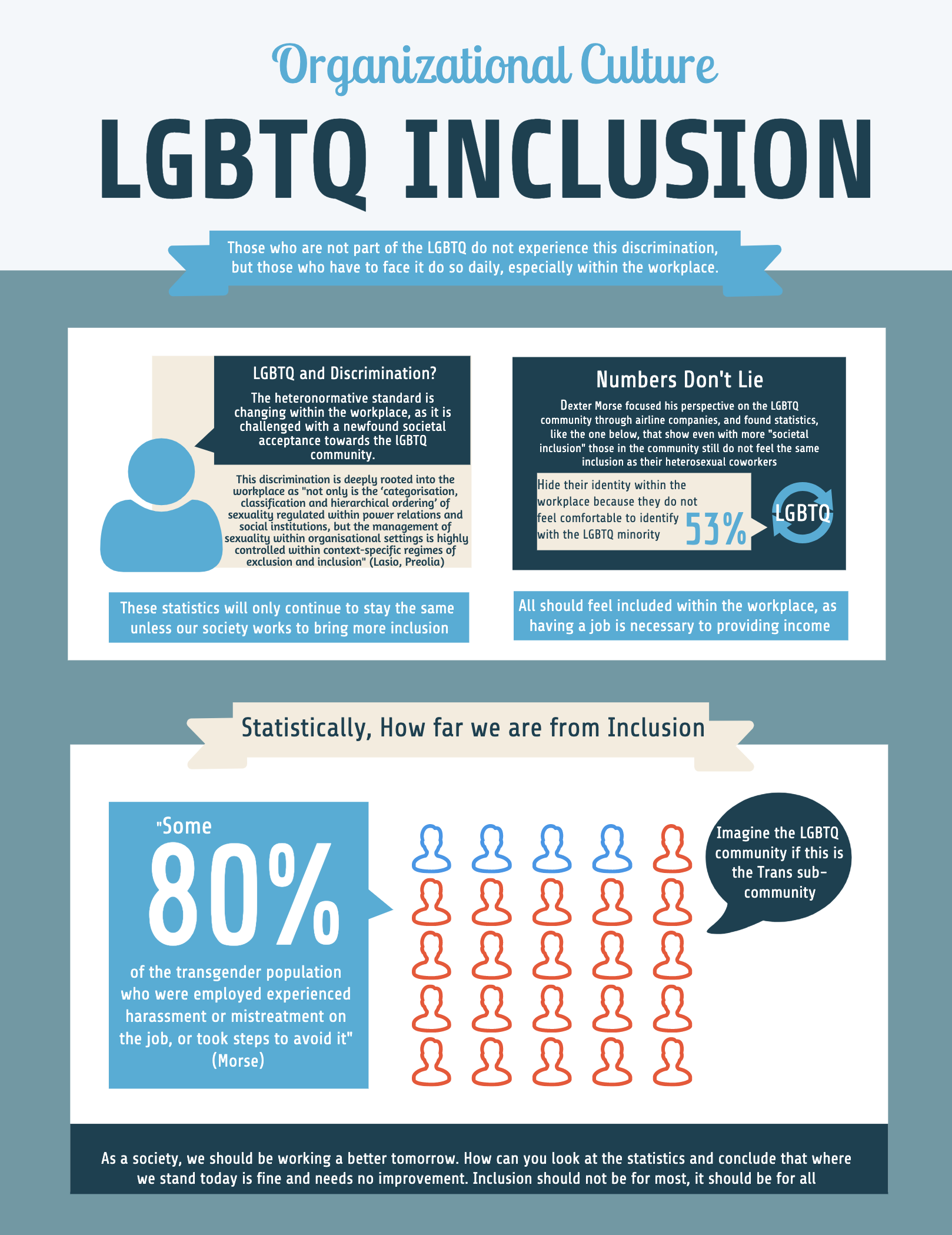From the research complied from Unit 2, i had ultimately decided to continue focusing on the LGBTQ community. Fascinated by the amount of information I had been exposed to, I knew that likewise my fellow counterparts would have not known much about the information I had acquired. What surprised me the most was the statistics, the numbers that only amplified the change that needed to be made within our society. Although movements for more inclusion of the LGBTQ community have picked up attention and support, learning statistically how far we are from equality for all sexualities was eyeopening. Most certainly, I wanted to share these statistics with as many people as possible in a way that would capture the audience as much as it did for myself. I really focused on my rhetoric when pursuing this project/unit, really creating a piece that would strike a wide audience of people and not just target one demographic. I tried to implement some of the teachings from “They Say I Say” as I pulled for strong information that would impact someone whether or not they were part of the LGBTQ community.
From this work I learned a vast amount about the discrimination towards the LGBTQ community. Furthermore, I took away from this project the strength and value of writing structure. The suggestions made on the rough draft of my infographic allowed me to challenge myself to compile a project that had more power. My sentences were very wordy and too much for an audience to read and want to learn more about. I was then challenged to fixate on what fragments made the biggest impact and supported the overall premise of what I was trying to promote within the infographic. Before, I was prioritizing the amount of information on the infographic, and that later changed to prioritize the strength of the information I had. There is no debating that a statistic is a statistic, but for one to be strong it needs to sucker-punch the audience with a hit at the current reality to have them reconsider their stance and understanding of a topic. When addressing the audience I wanted this infographic to hit home in a way that was not blaming something or another, but instead was focused on a conversation about education. Sharing statistics that counter the common belief that the LGBTQ movement is on a way to equality, which is true it is just the road ahead is long and not as short as perceived by those who are not identifiers of the community.
I really took away from this assignment how to manage and prioritize what is going to push my point across. Instead of honing into what an educator or professor may want to see, I had to reconsider my audience and who I was writing for. This audience was not someone who overlooked the progression of the project or had any idea about the assignment, it would be people stumbling upon this on social media and feel inclined to share with others the staggering information on it. Looking forward into the future I definitely want to continue practicing the projection of my purpose to the audience and focusing on the goal of the project, and less on the progression and grade. Improving this mindset will only make my writing stronger as I pretend to write to my intended audience instead of writing for the approval of a professor.


